#british tamil
Text
Bit of a mindfuck to see USAmerican conservatives supporting Israel. How do they square that with their antisemitic tinhattery and general abiding hatred of Jews? Do they slap an Israeli sticker with the Star of David on their pickup before or after going and vandalizing a synagogue?
Guess when we said "do not equate the Jewish people with the state of Israel" they went "Hell yeah! Fuck Jews! Stand with Israel!" 💀
Edit: I stand corrected. And informed. What the fuck.
#i know none of this is funny but#it's still pretty funny#other bewilderments:#ukrainians supporting israel#(because Putin is reported to aid Hamas in a roundabout fashion)#like bro. i get you can't criticise the US right now when you need them to fight russia but#it's_the_same_picture.jpeg#(afaik it's also mainly Ukrainian right-wingers)#also the 'British Tamil Conservatives' announced they were pro-Israel as well#saw them get dragged for filth by every other Tamil person on twitter lmao#the right-wing are universally the most brain dead bootlickers#free palestine#knee of huss#wtf news
224 notes
·
View notes
Text
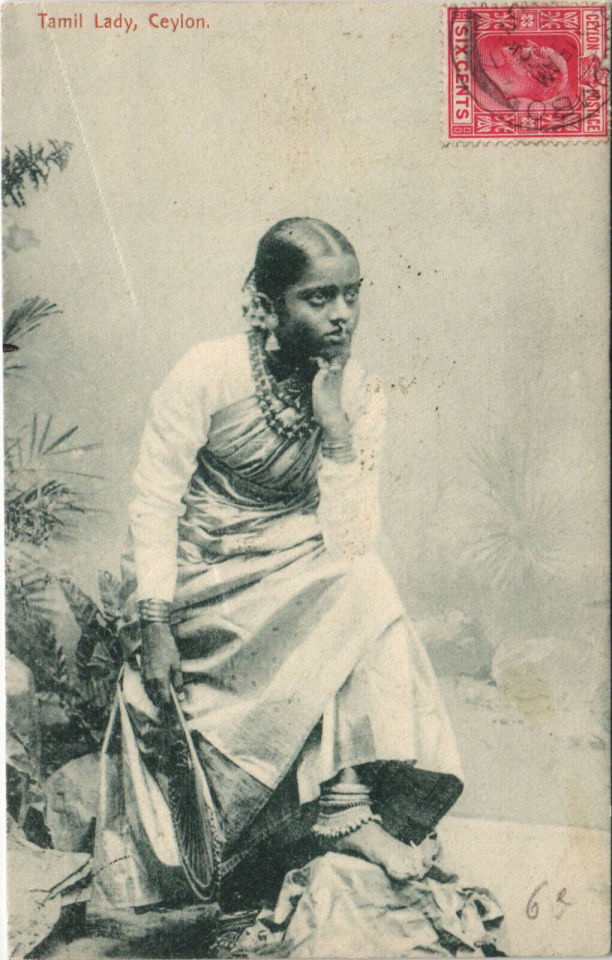
Tamil woman from Ceylon, Sri Lanka
British vintage postcard, mailed to Paris
#vintage#tamil#tarjeta#briefkaart#postcard#photography#postal#carte postale#sepia#ephemera#historic#british#paris#women#ansichtskarte#postkarte#lanka#ceylon#sri lanka#postkaart#mailed#photo
9 notes
·
View notes
Text
Knowing that Hugh Laurie is of british origin explains why he pronounces Dengue as Den-ghee (which is allegedly the british way of saying Dengue) instead of Den-ghay (which is allegedly the american way of saying it) but it doesn't explain why I thought I heard it as Den-ghu in the Indian commercials for mosquito repellants I watched as a child
#me watching house: 'haha he's pronouncing Dengue wrong. wait let me search it up to make sure'#quick google: american -> den ghay. british -> den ghee. Indian -> den gi (presumably based off of the brit way bc of the colonization)#ah mystery solved lads i looked up how tamil allegedly pronounces it and found a spelling of dengue as டெங்கு which would be pronounced#with a hard gu/ghu sound. but i also saw it spelled as டேந்க which would support the american pronounciation of it. but there was#also another spelling (டேஂககே) that didnt make sense based on what i know of tamil spelling. so perhaps i should take the source that#provided me the second option with a grain of salt? who knows. anyways#houlse
3 notes
·
View notes
Text


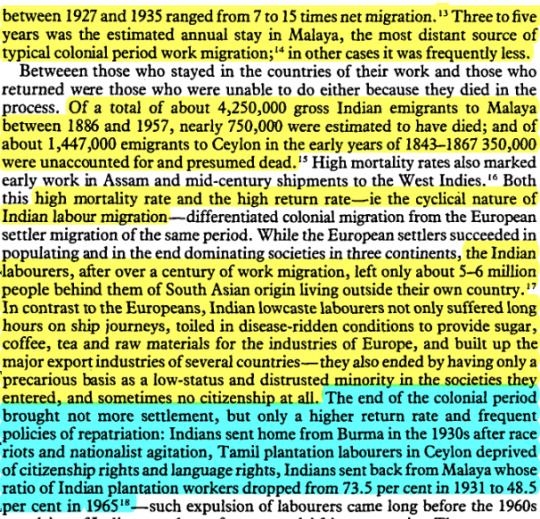

Migration in colonial India The articulation of feudalism and capitalism by the Colonial State, Gail Omvedt
35 notes
·
View notes
Text
I kind of want to leak 3's real name... just for the sake of having a less confusing thing to call her. I just don't like calling her amelia because it seems uhh non-ideal both logistics wise and in terms of her being her own person. Also dying to reveal the cute nickname I have planned for her ;_;
#ktxt#also in true 'venting about cultural assimilation' fashion I gave her a tamil name and an english name. Like girl same#(my great grandma and her children couldn't legally have a hawaiian first name back in the day so it had to be a middle name)#Now in the world of FL I'm sure it's far more liberated than that#But I think still esp in the ministry there's a fear of how far you can really go without appearing 'english enough'#not just for non british races either like I think if u were too culturally welsh you'd be having issues#but idk that's the vibe I get/my own creation really. I gotta Vent
3 notes
·
View notes
Quote
Popular lore maintains that a Sufi mystic from Karnataka, Baba Budan, brought back raw coffee seeds from Arabia when he travelled to, to perform the Haj in the 16th century. This was a dangerous thing to do then since the Arabs had strictly forbidden the export of coffee seeds. But Baba Budan’s flowing robes allowed him to secret away the seeds in a hidden compartment when he set sail to India from the port of Al Mokka (hence, mocha) in modern-day Yemen. Back home, he began growing the crop. Qahwakhanas (coffee houses) were soon established, and many upper-class Indians took to the drink. In fact, across the Islamic empires of the world at that time, coffee was the beverage of popular choice. The decline of Mughal rule and the advent of the British dimmed the popularity of coffee for some time, but it made a comeback in the 19th century when the British began cultivating it in South India for export and for local consumption. By the early 20th century, all sorts of people had begun drinking coffee. In Tamil Nadu, which today is known to be very partial to its coffee (‘degree kaapi’ in the local parlance), the beverage soon replaced kanji (rice gruel) as the early morning drink. The growing popularity of coffee led to the establishment of the first India Coffee House under the auspices of the Coffee Cess Committee (a government body) in September 1936 in Churchgate, Bombay. Over the next few years, more such coffee houses were opened in different parts of the country. Though they were initially popular, by the mid-'50s, they were in trouble. The Coffee Board of India (the new avatar of the Cess Committee which had been established in 1942) then began to contemplate shutting them down.
Karthik Venkatesh, ‘A short history of the India Coffee House: Conversation, revolutionary politics and a different way to do business’, Firstpost
#Firstpost#Karthik Venkatesh#Baba Budan#Al Mokka#Qahwakhanas#Yemen#India#coffee#Mughal rule#British Raj#South India#Tamil Nadu#India Coffee House#Coffee Cess Committee#Bombay#Coffee Board of India
8 notes
·
View notes
Text

Ashley Radjarame by Sarah Piantadosi for British Vogue June 2022
3 notes
·
View notes
Text
man I don't think people should be using ethnicity as epithets
#Like. Specific example is ''the Tamil'' and idk. You could maybe say ''the Tamil man'' or something but. Maybe not Just the ethnicity#Imagining someone describing me as ''the Chinese'' or my friend as ''the Iraqi''. The British. The Irish.#I guess american is fine but that's generally more of a nationality than ethnicity... Man idk shits weird
0 notes
Text
.
#no bcs#one of the main reasons i wanna get into a college thatll let me take history as like an elective#is bc the history they teach us in school is so insanely partial and selective???#first off they cut the chapter abt mughal kings from our book#grabted they kept the one abt mughal rural society but still?? u can't rlly defend them cutting this MAJOR portion out#nd then theres the stuff they don't have in the books at all#like i vaguely recall studying abt cholas in 6th grade maybe?? or seventh???#but even my teachers didn't take hist as a subject seriously back then and i was least bothered abt school so i didn't pay attention#ig thats partially my fault but also..idk i feel like our teachers should've done more to get us interested.#anyway so the cholas we did SIX years ago#and we learnt nothing abt the other tamil cheifdoms except Vijaynagara#the hyper focus on norht India aside#they also just did not teach us abt the rajput kingdoms either?? between the mughals and the british#we learned NOTHING abt those rulers#like ? ur content is already missing so much WHY would u exclude even more instead of introducing more stuff ???#insane!!#anyway i know better than to rely on fkin ncert for my historical knowledge lmao
1 note
·
View note
Video
youtube
Most Valuable British India coin Market Price || Old Coins Value Tamil | IndianHobbyTamil
#youtube#Indian Hobby Tamil#Most Valuable British India coin#Old Coin Market Price#Old Coins Value#King George VI Coin Value#King George VI Coin Market Price
0 notes
Text
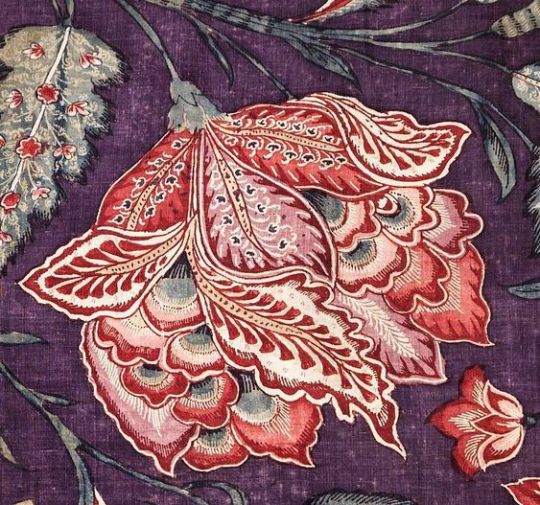

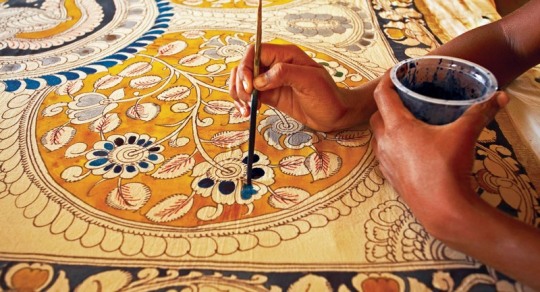
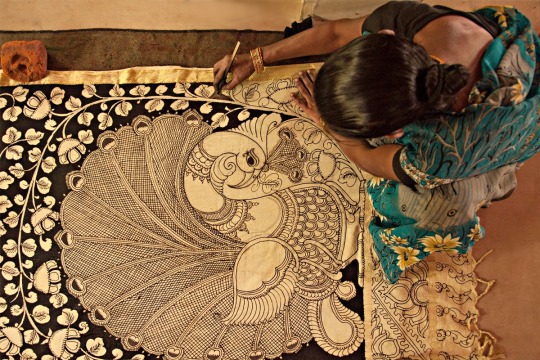

Kalamkari textiles of India.
The Persian name Kalamkari or ‘qalamkari’ is derived from the words kalam (pen) and kari (craftmanship) which translates into drawing using a pen. While there is a mention of these fabrics in ancient scriptures, this art received great patronage during the 16th-17th centurywhen the Golconda Sultanate ruled the Deccan. These wealthy sultans supported this craft and so did the Mughals who were their successors. It was also popular with the British who used these textiles for decorative purposes. Influenced by the Persian school of art, Kalamkari is being practiced for centuries in Andhra Pradesh and the artisans who practiced this art were known as ‘qalamkars’.
The entire process of manufacture is complex and involves as many as 17 steps with multiple rounds of dyeing, washing and boiling the fabric. The initial fabric is sourced from various places like Coimbatore, Erode and Tirupur in Tamil Nadu which is first washed thoroughly to remove any impurities in the form of grease, wax and dirt.
52 notes
·
View notes
Text
AU where the Potters are actually South Asian and their earliest ancestor, Linfred of Stitchcombe, was actually an immigrant from what is now known as Tamil Nadu. He came from a family of potioneers and healers who were known for their relationship with snakes and their ability to understand the language of serpents (known within Europe as Parseltongue) but their variant of Parseltongue was believed to be a blessing from their patron deity Aravan.
The Descendants of Nandhini
The Descendants of Nandhini, more commonly known as the Descendants of Aditya by outsiders, refer to a family of Tamil wix who occupy a heavily warded and hidden territory within part of the Western Ghats in Tamil Nadu, India. They are traditionally healers and agriculturists who work closely with snakes of both Magical and mundane origins. Their affinity and bond with snakes lead them to develop the Magical ability to speak and understand the language of serpents.
They are named after the first member of the family who mastered the language of serpents, Nandhini. Nandhini was a Tamil witch who lived at the height of the Chola Empire, specifically during the mid-900s. Nandhini was her parents’ third child and only daughter. When Nandhini began to display perfect fluency in the language of serpents, it was viewed as a sign of favour from their patron Aravan and Nandhini was then announced as the family’s next head. However, she was to disguise herself as a man and go by the name Aditya as well as take on a wife for the rest of her life.
From Nandhini, new traditions were developed. One tradition was the secretive way of succession for the title of family head. While the family head remained a male in official records and to anyone who asked. But in reality, a woman held the actual title of family head. The hereditary Magic and Relics of the family was bestowed upon the eldest daughter of the main line, which she would then pass down to her eldest daughter when the daughter came of age. This is one of the family’s best kept secrets and is still kept close and hushed up to this day.
Another tradition was keeping long-living Magical serpents as familiars and protectors of the family and carriers of hereditary knowledge. These serpents were regarded around the same level as the family’s elders and the family often spoke with them for advice or knowledge.
The descendants of Nandhini, like the other Magical families of Tamil Nadu at the time, lived in harmony with their mundane neighbours. Mundanes were aware of and lived with Magic despite being unable to wield it themselves. This carried on until the start of British colonization in India. The Magical families of Tamil Nadu escaped colonization by a breath’s width by using Magic to completely hide themselves from the rest of the world. The descendants of Nandhini in particular worked with their snakes to “camouflage” their biggest family compound within the Western Ghats, with the snakes themselves acting as the living “boundaries” of their territory who also act as natural deterrents for anyone who comes too close.
The Magical families remained isolated from the outside world for the entirety of the British’s colonization of India and even lasted a couple of decades after. However, they have managed to reestablish connection with the other Magical families as the years passed by. During their time of isolation, the caste system was slowly dissolved and forgotten and many Magical Tamil families abandoned their castes and titles in favour of simply calling themselves the descendants of their oldest recorded ancestor. In the present time, Magical Tamil Nadu are large joint family groups scattered geographically but are well-connected by an intricate communication system set up by their ancestors. They are still mostly disconnected from the rest of the Magical World but not as much as it was during the colonial era.
The descendants of Nandhini in the present time mostly use the language of serpents, Tamil, and Sanskrit as their main languages. However, their members also show fluency in Middle Tamil and Classical Sanskrit. The latest generation of the descendants are currently learning present-day English.
BRITISH BRANCH — THE POTTERS
During the 1200s right as the Chola Empire began to decline, a group of the descendants of Nandhini led by someone now known as Linfred of Stitchcombe found their way to the British Isles. Though considered “eccentric” by his British neighbours, Linfred was nonetheless well-liked due to his helpfulness and affable nature. He and his family were known for their excellent healing remedies and strange plants, but they were warned by their ancestral snakes and the local snakes to hide their affinity for snakes and their knowledge of the language of serpents for their own safety.
This branch eventually adopted the surname of Potter by demand of the British Ministry of Magic, though there wasn’t any significant reason behind the choice of surnames. Though they are Potter on paper, they still proudly refer to themselves as descendants of Nandhini and would often use Nandhini as another surname in addition to Potter. They kept in contact with the main branch throughout the centuries until the main branch seceded during the British colonial period.
Despite their positive reputation in the British Magical community and their position of being essentially Purebloods, the Potters preferred to marry within their South Asian community. The other British Pureblood families attempted to marry into the Potter family for generations especially after the Potters rose to the top of their respective industries, but they remain unsuccessful to this day. It is because of this refusal to marry into the British Pureblood society that the Potters were exempted from the Sacred 28, not that they cared anyways.
The Potters amassed wealth, prestige, and influence through their revolutionary contributions and breakthroughs for British healing magic and potions. Eventually, they also started to build up a business in Magical pottery and ceramics. The potions they sell are often packaged in custom ceramic bottles made by their own company. Their business partners are exclusively businesses owned and run by South Asians and South Asian immigrants and have recently begun to open their connections to other BIPOC-owned businesses as well. As of the present day, the Potters are one of the leading names in both the potioneering and Magical pottery/ceramics industry.
The Potters usually send their children to Hogwarts School of Witchcraft and Wizardry where they would usually be Sorted into either Slytherin or Gryffindor. However since they have reestablished their connection with their main branch in Tamil Nadu, the recent generations have been considering sending their children to their ancestral home for schooling instead.
During the mid-18th century, the Potters began to republicize their affinity and connection with snakes and their usage of the language of serpents as a way of preserving their connection to their family back in their motherland and as a silent protest against the growing negative perception of snakes and serpent-speakers in the United Kingdom. It was noted by Magical linguists that the language of serpents that the Potters knew were far different than what Europe had called “parseltongue”. This variant of “parseltongue” became known as Potters’ parseltongue amongst the European populace, though the family themselves have never used the term themselves.
Despite having lived away from their main branch for centuries, the Potters still maintain almost all of the family traditions. The family is patriarchal on paper but matriarchal in practice. Their family manor in Gloucestershire had an entire green space for the ancestral snakes that they have brought from Tamil Nadu and their other snakes that they have adopted and bred. They continue to revere their patron deity Aravan, whose image decorates sacred spaces within the Potter family estate.
In the latest generation, the Potter family is closely connected with the other Magical South Asian families within the United Kingdom and the rest of Europe. They also have close ties with the Black family who claims ancestry from ancient Egypt and Persia. The current heads of the Potter family, James and Lily, have both married Regulus Arcturus Black who is the second son of Orion and Walburga Black. James also considers Sirius Orion Black his best friend and the couple have appointed Sirius as the godfather of their eldest child Hariharan "Harry" James Potter.
#harry potter#desi harry potter#desi james potter#harry potter au#the black family#jegulily#your faves are now bipoc im not sorry#everything is approved by my south asian mom friend btw#theres more where this came from#my stuff : nandhini's legacy au
89 notes
·
View notes
Text

Tamil woman from Ceylon, Sri Lanka
British vintage postcard
#lanka#vintage#photography#british#postkarte#carte postale#postal#sri lanka#briefkaart#postcard#woman#tamil#old#ceylon#photo#sri#ansichtskarte#sepia#postkaart#ephemera#tarjeta#historic
17 notes
·
View notes
Text

I accidentally deleted this ask yesterday but fortunately had a screenshot. Ngl I'm kind of ??? about it because...why would you single out Hinduism to pick the most fundamentalist, cultural and political aspect of it, that's not even practised in most the Hindu minorities outside of India? Nearly every community in India has a caste system regardless of religion. Within Hinduism there's no just one caste system either. Eelam Tamil Hindus have a caste system, but it's not as violent as India's (although of course still violent and oppressive). Sinhalese have a caste system too, and the ones still invested in it would swear blind this was related to Buddhism somehow, a doctrine that preaches against inequality of any kind. Caste systems are literally haram in Islam and yet some Muslim communities managed to rationalize creating one because they wanted to assimilate into the worst of us I guess.
I know fuck all about Hinduism to tell you the truth, but my sister is a convert and devotee of Durga Matha. I asked her about it and she sent me this:
There are as many variants of Hinduism as there are varieties of grass. The only thing they have in common is the Vedas which is a bunch of hymns and stuff. It doesn't really go into detail about caste.
The caste system comes from a book called Manu Smriti. Some accept it as a Hindu text, some don't. Hinduism isn't even a religion actually. It's a bunch of similar belief systems that the Britishers lumped in together for ease of classification. Within Hinduism there are many sects- Saivism, Shaktism, Vaishnavism, etc. So to define Hinduism as some sort of oppressive religion doesn't make sense because it isn't a religion as Westerners define it. Anyway, truth is everyone cherry picks the parts of religion that suits them and discards the rest. Some think that's being dishonest. I think that's just common sense.
This makes sense to me. It's very colonial to monolithize belief systems that evolved from the disparate religious texts and syncretic practices of dozens of kingdoms and dynasties over 4000 years, just because it shares the unique character of belonging to the Indian subcontinent. (Which is precisely why its propagated by Hindutva nutcases. They're imperialist colonizers permanently snorting Indian manifest destiny crack.)
Bestie. Friendo. My guy (gender neutral). Ideology doesn't shape society. People wrap ideology around what they already want to believe and do. This is how you get Zionists (both Christian and Jewish), Wahabi/Salafi Muslims, Hindutvas and... whatever we're supposed to call this current iteration of Theravadin Buddhism that is also characterized by ethnosupremacy and genocide. Religion takes the character of the individuals and ideologues that choose to follow it. There are no exceptions.
To reiterate the point that inspired this ask: Some LGBT folks's queerness is inextricable from their religious identity. Stigmatising and ostracizing religion in queer spaces is alienating, racist and violent. Just like no one should force religion on you, no one should force secularism on people either. There is enough air for us all to breathe free.
#religion#hinduism#religious tolerance#casteism#social stratification#buddhism#islam#anti zionism#hindutva#culture and society#racism#colonialism#christianity#knee of huss#asks#anon#sri lanka
54 notes
·
View notes
Text

Migration in colonial India: The articulation of feudalism and capitalism by the Colonial State, Gail Omvedt
24 notes
·
View notes
Text
an Au idea for a fic
i can't keep this to myself. [Zooble and Jax are not here because they be 17y old]
Ragatha = Agatha Rand, female, 25y old, lesbian, Psychologist (Therapist), German/UK descendant, natal British.
Pomni = Ponmani Powell, female, 20y old, bisexual, patient, Tamil/UK descendant, natal British.
Gangle = Gabriela Smith, female, 21y old, straight, nurse, Spain/UK descendant, natal Spaniard.
Kinger = Reggie King 43y old, straight (widower), patient, UK descendants, natal British.
Director Caine 52y old , straight (married to the moon XD)
mental health hospital AU.
Agatha is in her second year in the mental health care hospital, and a week ago she was stab from a patient but she came back anyway, now she take a sole new patient, a nervous small girl, the two of them begin to develop a relationship that end up being healthy for both of them.
I going to do a fic about this idea, but if any wants to do something with this idea, be my guest.
#pomni x ragatha#ragatha x pomni#buttonblossom#the amazing digital circus#tadc ragatha#tadc pomni#tadc gangle#tadc kinger#tadc caine#tadc au
55 notes
·
View notes